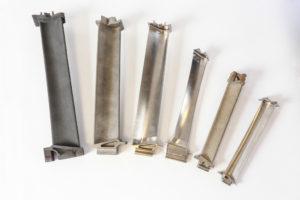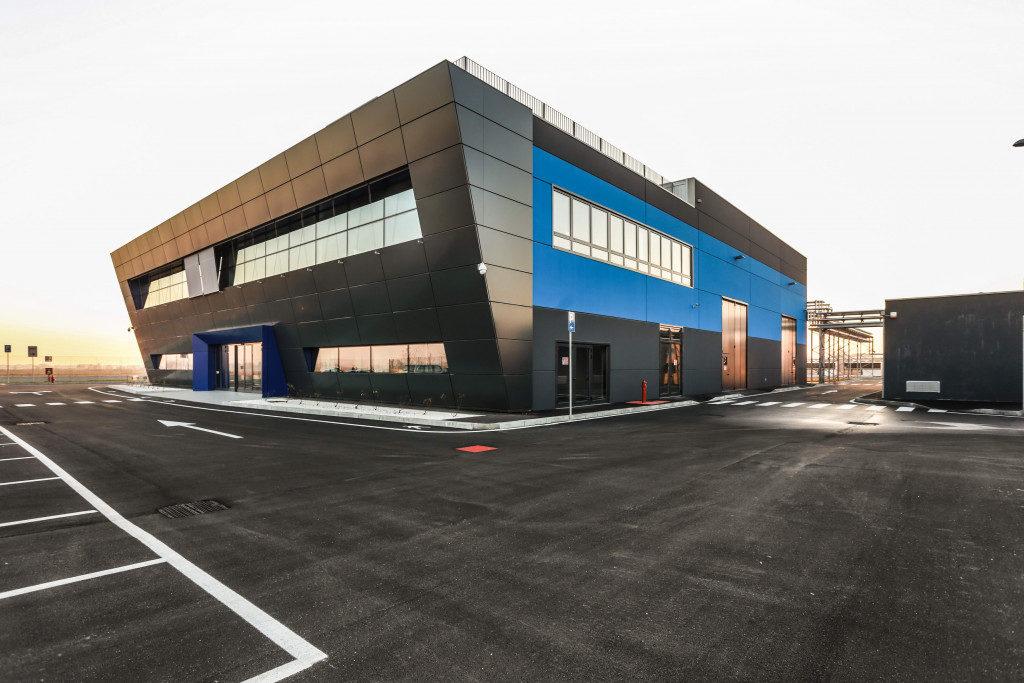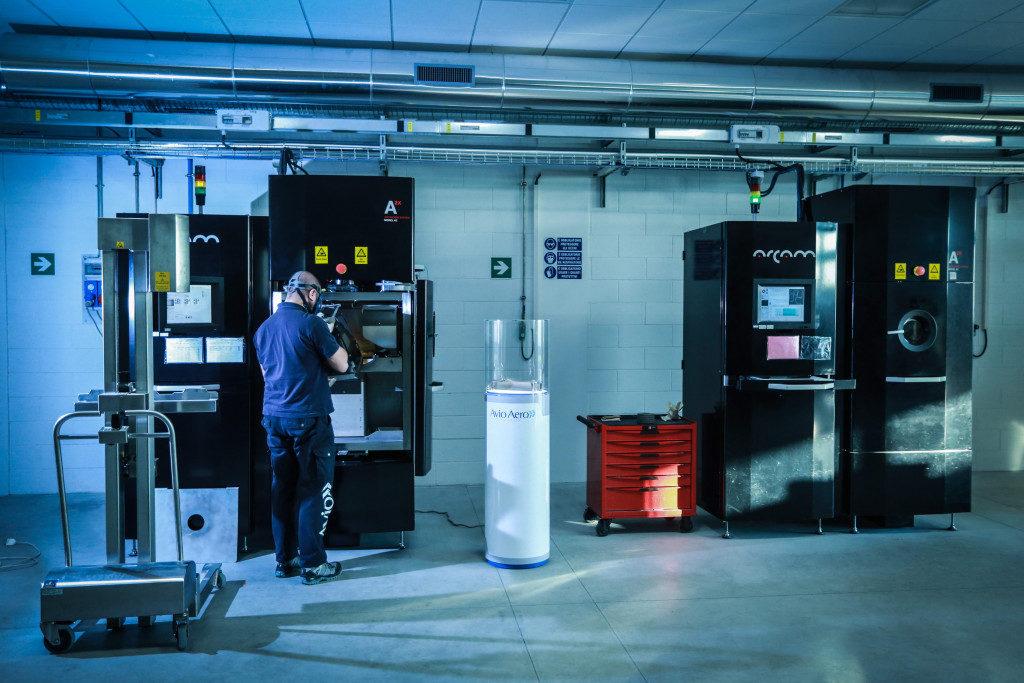 While the tiny town of Cameri may not look like one of the most beautiful cities and villages to dot the Italian landscape (even a local business owner said it was not the prettiest), some would beg to differ. Three years ago, Avio Aero, which designs, manufactures, and maintains systems and components for both civil and military aviation, opened the most advanced additive manufacturing factory in Europe on the edge of town, and since then, they have received a steady flow of visitors: not tourists, but engineers, executives, and additive manufacturing professionals. Not long after the company opened the factory, they were acquired by GE Aviation, which is using the technology on-site to change how aircraft engines are manufactured.
While the tiny town of Cameri may not look like one of the most beautiful cities and villages to dot the Italian landscape (even a local business owner said it was not the prettiest), some would beg to differ. Three years ago, Avio Aero, which designs, manufactures, and maintains systems and components for both civil and military aviation, opened the most advanced additive manufacturing factory in Europe on the edge of town, and since then, they have received a steady flow of visitors: not tourists, but engineers, executives, and additive manufacturing professionals. Not long after the company opened the factory, they were acquired by GE Aviation, which is using the technology on-site to change how aircraft engines are manufactured.
On a recent visit to the Cameri factory, David Joyce, president and CEO of GE Aviation, said, “This factory has helped us understand what the art of the possible is with additive manufacturing. This is the cutting edge.”
 GE is focusing efforts on driving AM, after a disappointing Q4 2016. This certainly seems to be a smart approach; Dario Mantegazza, an Avio Aero manufacturing engineer, said it best, when he described 3D printing as having “no limits to complexity.” GE Aviation has facilities in Germany and Sweden, where they acquired majority stakes in Arcam and in Concept Laser last year. The company has a factory in Auburn, Alabama, and also owns AM pioneer Morris Technologies, located in southwest Ohio. But Joyce says the little Italian town of Cameri, and Avio Aero, are an important part of GE’s overall AM business strategy and will be “at the center of the growth of our additive ecosystem.”
GE is focusing efforts on driving AM, after a disappointing Q4 2016. This certainly seems to be a smart approach; Dario Mantegazza, an Avio Aero manufacturing engineer, said it best, when he described 3D printing as having “no limits to complexity.” GE Aviation has facilities in Germany and Sweden, where they acquired majority stakes in Arcam and in Concept Laser last year. The company has a factory in Auburn, Alabama, and also owns AM pioneer Morris Technologies, located in southwest Ohio. But Joyce says the little Italian town of Cameri, and Avio Aero, are an important part of GE’s overall AM business strategy and will be “at the center of the growth of our additive ecosystem.”
The plant in Cameri is special, because it uses twenty Arcam-developed AM machines, which fuse together layers of titanium aluminide (TiAI) using an electron gun to accelerate an electron beam. TiAI is 50% lighter than nickel-based alloys, and is being used in the Cameri plant to 3D print blades for the GE9X jet engine’s low-pressure turbine.
The engineers are able to additively manufacture blades that are four times thicker than ones created with a laser-powered 3D printer, which is good, considering the GE9X is the largest jet engine ever built; the diameter of the turbine itself is over 80 inches.
This electron beam technique is so fast it’s even competing with casting, which is the standard way to manufacture TiAI parts. The team is also able to use the same machine to change the part shape and print different blades at the same time.
Mantegazza says, “You have the ultimate manufacturing freedom.”
But there’s a reason it’s called an additive manufacturing process: it’s not complete just because something has been pried off the print bed. The printed turbine blades leave Cameri and travel to an industrial suburb of Naples, Italy. Pomigliano d’Arco, which lies at the foot of Mount Vesuvius, has housed one of Avio Aero’s largest factories for a long time, and is also a GE Aviation “center of excellence,” where GE engineers develop the best and quickest ways to finish 3D printed parts. Some of these parts include not only the turbine blades, but also advanced turboprop engine (ATP) components, which use more additive parts than any other GE Aviation engine before.
Engine designers where able to take roughly 800 individual parts into just 12, just by using additive manufacturing and the design optimization it allows for in complexity. Carlo Silvestro, an engineering manager at the Pomigliano plant, says that roughly 35% of the ATP will be 3D printed, which will help lower its weight, while also achieving 10% more power and decreasing fuel burn by up to 20%. Silvestro and his engineering team are working hard to develop the most effective ways to complete large, complex additively manufactured parts, like the ATP combustor.
Silvestro said, “This is the first time we are doing something like this.”

The low-pressure turbine blades for the GE9X jet engine were printed in Cameri and finished in Pomigliano.
Avio Aero isn’t just focusing on the benefits and applications of next-generation additive manufacturing technology: the company has a research network, which includes 20 technical universities and companies across Italy, so they can help educate the scientists of the next generation. One of these universities is the Polytechnic University of Turin, which has brought a lot of talent to GE in recent years, including Mantegazza. Franco Tortarolo, who runs the Avio Aero research programs, says that the Polytechnic University assisted his company in becoming experts of the electron beam technology at the Cameri factory.
“Additive manufacturing is the most exciting technology today. If Leonardo da Vinci could see what we are doing, he would be proud,” said Tortarolo.
A new research lab will open on the university campus this year, which will be focused on testing new machines and developing new printing materials. Discuss in the GE Aviation forum at 3DPB.com.
[Source: GE Reports / Images: Avio Aero]
Subscribe to Our Email Newsletter
Stay up-to-date on all the latest news from the 3D printing industry and receive information and offers from third party vendors.
Print Services
Upload your 3D Models and get them printed quickly and efficiently.
You May Also Like
3D Printing News Briefs, November 29, 2025: Submarine Industrial Base, Running Shoe, & More
In this weekend’s 3D Printing News Briefs, we’ve got more news from Dyndrite, which has launched the NXG Slice Viewer for Nikon SLM Solutions. Farsoon Europe has news to share...
3D Printing News Briefs, November 27, 2025: Awards, Sand Binder Jetting, Tabletop Gaming, & More
To all those who celebrate, happy Thanksgiving! In today’s holiday 3D Printing News Briefs, we’re starting off with some exciting news: the winners of this year’s Formnext Awards! Then, we’ll...
3DPOD 281: Freemelt CEO Daniel Gidlund on E-Beam PBF Metal AM
Daniel Gidlund leads Freemelt, a company that has been steadily establishing its place in metal AM with open-source thinking and a clear technical vision. In this episode, he walks us...
3D Printing News Briefs, November 22, 2025: Rebranding, Integration, Electronic Eyes, & More
We’ll start with a new software tool from AON3D in today’s 3D Printing News Briefs, and then we’ve got a lot of business, from Conflux Technology and Prima Additive to...





































